Conqueror trailers are finally on the American overlanding scene after years of seeming just beyond our reach. The videos of these trailers on YouTube have been shared with statements like “If only I could get one here,” and “They are so cool, too bad they don’t import them.” Finally, in September of 2015, they did start importing them to the US. An American engineer got the North American distribution rights when he agreed to do all the legwork to get the South African built trailers compliant with American import regulations. The timing fit perfectly with our trip preparations, and we bought a North American version of the UEV 440 Extreme, sight unseen, for pick up in South Africa. After picking it up at the factory just outside Johannesburg, our African journey got properly underway, starting with Namibia. We have been living in our trailer since mid-March, and these are our thoughts on it thus far.
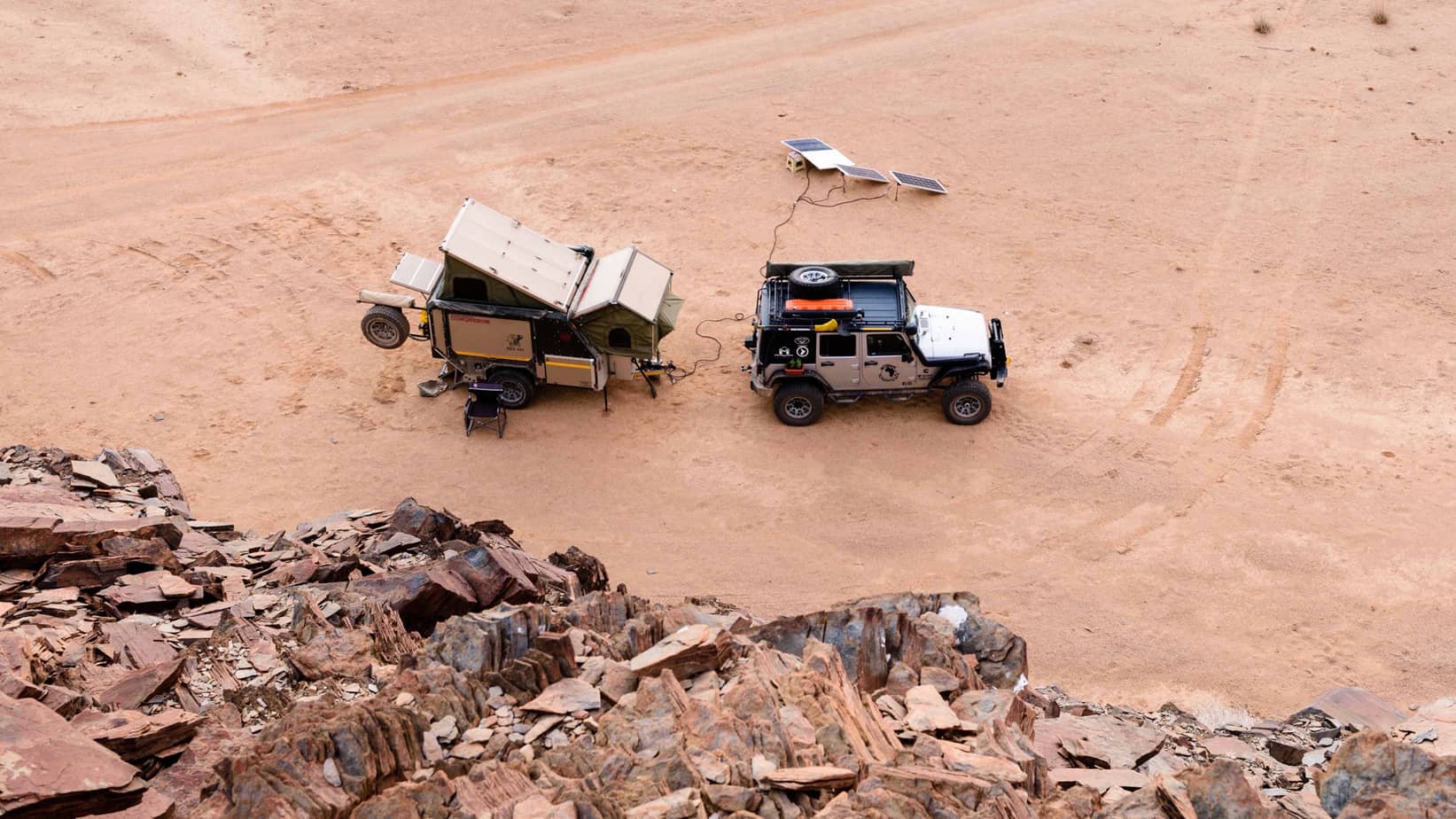
The Conqueror Companion, or UEV 440 as it is known in North America and Australia, has been on our radar for a few years. It ticks off all the boxes for our needs: room to stand up and get dressed inside, kitchen outside for the full camp experience and to keep kitchen smells from permeating our bed, a trailer so we didn’t have to build a dedicated RV, and tough enough to withstand whatever Africa would throw at it. Our plan had been to start our trip in South Africa so we could buy a used South African model, but when we found out that we could buy one that we could legally bring back to the States we were pretty excited. We plan on using this trailer for more than just our journey through Africa; we want to use it to explore the US and maybe even Latin America. David, the man behind Conqueror North America, is great to work with and answered a bunch of questions we had since we had never seen the trailer in person. He even worked with Conqueror in South Africa to arrange for us to pick up the trailer at the factory. The factory team was also great to work with, installing the few things that normally get installed once the trailers land in the US and giving us a thorough tour of our new home. When we hit the open road with it we were fulfilling our dream of the last few years.

The first thing you notice when you pull one of these (loaded with gear, food, and water) is that they are heavy. Much heavier than a pop-up tent trailer which is similar in size once both are set up. This is somewhat confidence inspiring, as I have seen the carnage caused by off-roading a tent trailer. This trailer is much more stoutly built than any tent trailer. We knew that Africa would be tough on a trailer, and were glad to have a sturdy one. The second thing we noticed is that despite being so heavy, you don’t feel the trailer moving behind you on the road. It tracks right along behind our Jeep, absorbing most bumps without complaint. Bigger bumps will lift and drop the back end of the Jeep, but so did a tent trailer, and even our little teardrop trailer on bigger whoops. The Conqueror does have independent suspension, so it rocks a bit, but you only notice it in the mirrors, never feeling it. Even when we get into more tricky, technical trails, it follows along behind, right in the tracks of the Jeep. Under heavy braking, it doesn’t try to push the vehicle, and as our trailer has the South African legal surge breaks, I can only imagine that the North American version with electric brakes is even less noticeable. The only time towing it was problematic was in deep sand where I couldn’t get enough speed to float. In that case though, any trailer would be a pain in the neck, and the fact that ours was didn’t surprise us.
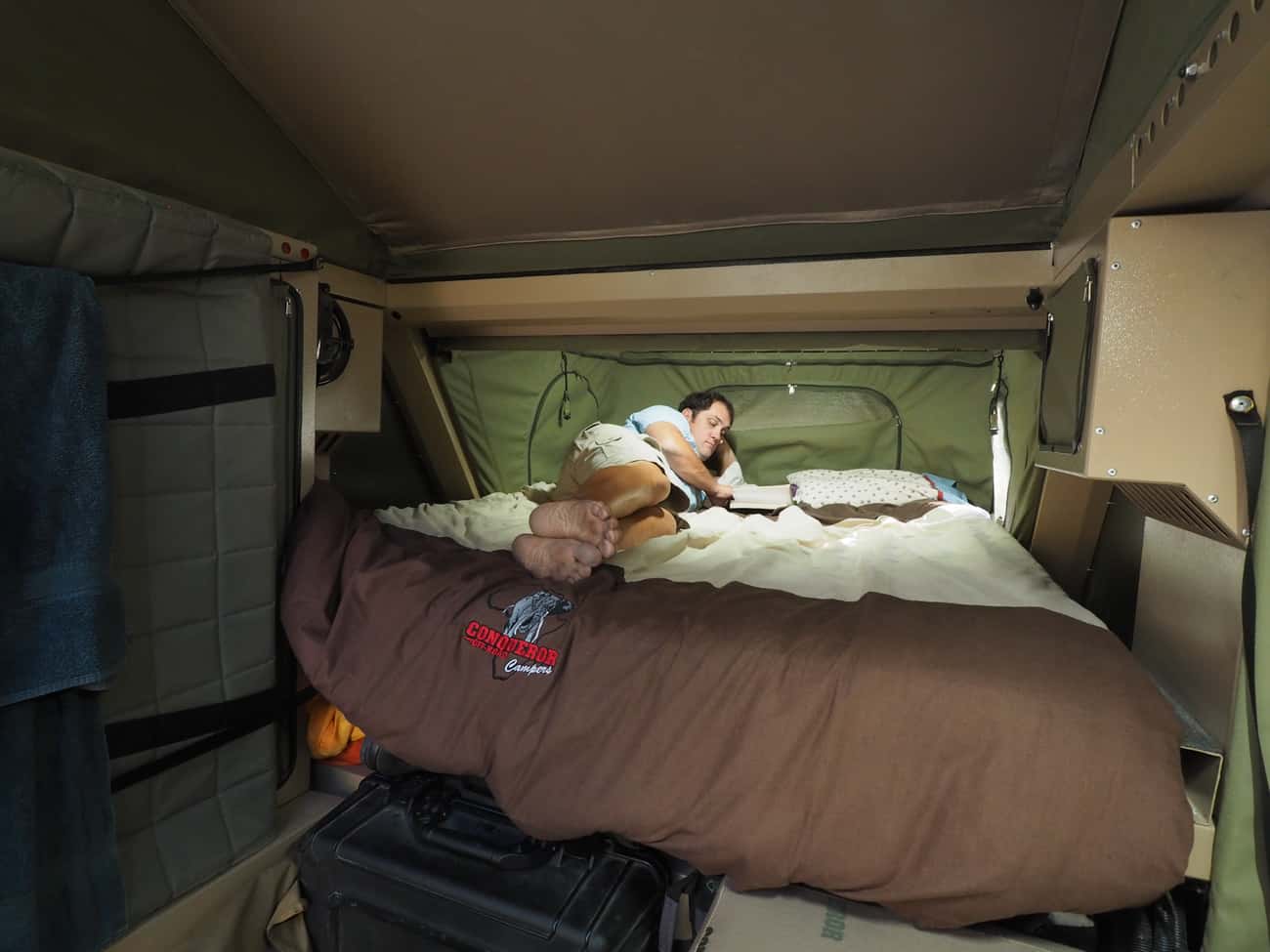
Once we had a couple of tries under our belt, we have gotten to where we can set up camp in about 10 minutes. The first time we ever set it up on our own, we did it in the dark without issue: trailer disconnected, stabilizer legs set, roof popped, and both beds set up. It is important to get the trailer level, both for a good nights sleep and for the function of the kitchen drawer system. The front bed, what we call the Master, is a queen-sized mattress. It is also one of the more comfortable beds we have found. While the master bed looks a bit of an ungainly contraption from the outside, it makes for a large space, large enough for me to comfortably sit up at 6’1”. The side bed is a bit short for my frame, but it would fit shorter adults and children just fine. For us, it is more of a lounge area in cold or wet weather or a bed for guests. With the tip-up top, standing up inside the trailer is no problem. The tent walls connecting the top to the rest of the trailer have three big windows, one on each canvas side. These let in a lot of light and allow for quick cooling after the trailer has been baking in the sun. When they’re zipped closed, they help trap some heat to take some of the nip out of chilly nights. They also block out most of the light, so if you need to sleep somewhere with bright lights, they’re a big help. Lastly, the closet space inside is more than enough for all the clothes, linens, and toiletries we’ll need for our trip.
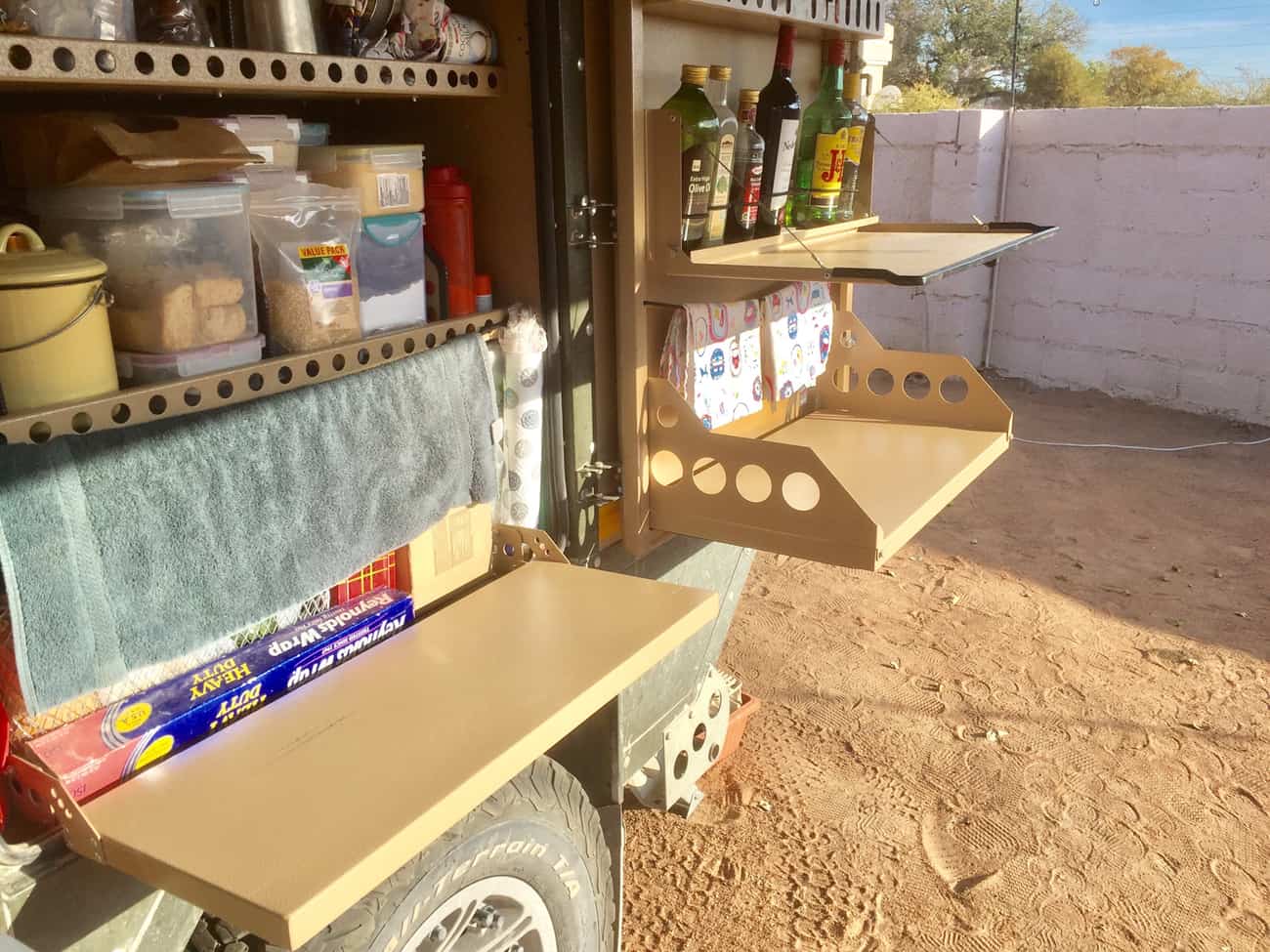
The kitchen area was a major selling point for us. We like cooking outside, where we can be near the fire and take in the sights as we prepare our meals. The pantry, as we have taken to calling the large cabinet in the side of the trailer, is massive. We were able to pack enough dry food and cooking utensils to go for over 3 weeks between grocery stops without a problem. We have found that we have to rein ourselves in when buying fresh produce as we can carry more than we can go through before it goes bad due to the heat. Conqueror did a great job thinking out the size and shape of the food storage area too, creating a space where everything is easy to access and organize. They also included enough counter space for both of us to work on food prep at the same time, with another shelf to boot. All of this folds out of the pantry, so it easy to use and doesn’t take up much space while in transit. The kitchen, as we call the drawer that holds the 80-liter National Luna fridge/freezer, the stove, the water tap and basins, and dish storage is equally well designed. It is easy to get to all the food storage, refrigerated or dry, while still within arms reach of the stove. The dish storage is well organized and has enough room for all the cooking utensils that two foodies could want. An area behind the stove/dish storage is enough to store the three plastic basins, emergency canned food, a couple of pots and pans, and some charcoal briquettes. We opted for the Webasto diesel burning hot water heater, which gives piping hot water to do dishes. We have noticed that the fridge shifts around while in transit. Pushing it back into place isn’t that big of a deal, except that it pinches its power cord against the side of the drawer which will result in unplugging the fridge when the drawer is closed if we aren’t paying attention. It’s really a pretty small issue, and we love the kitchen and layout; it is almost as easy as cooking in our kitchen at home.
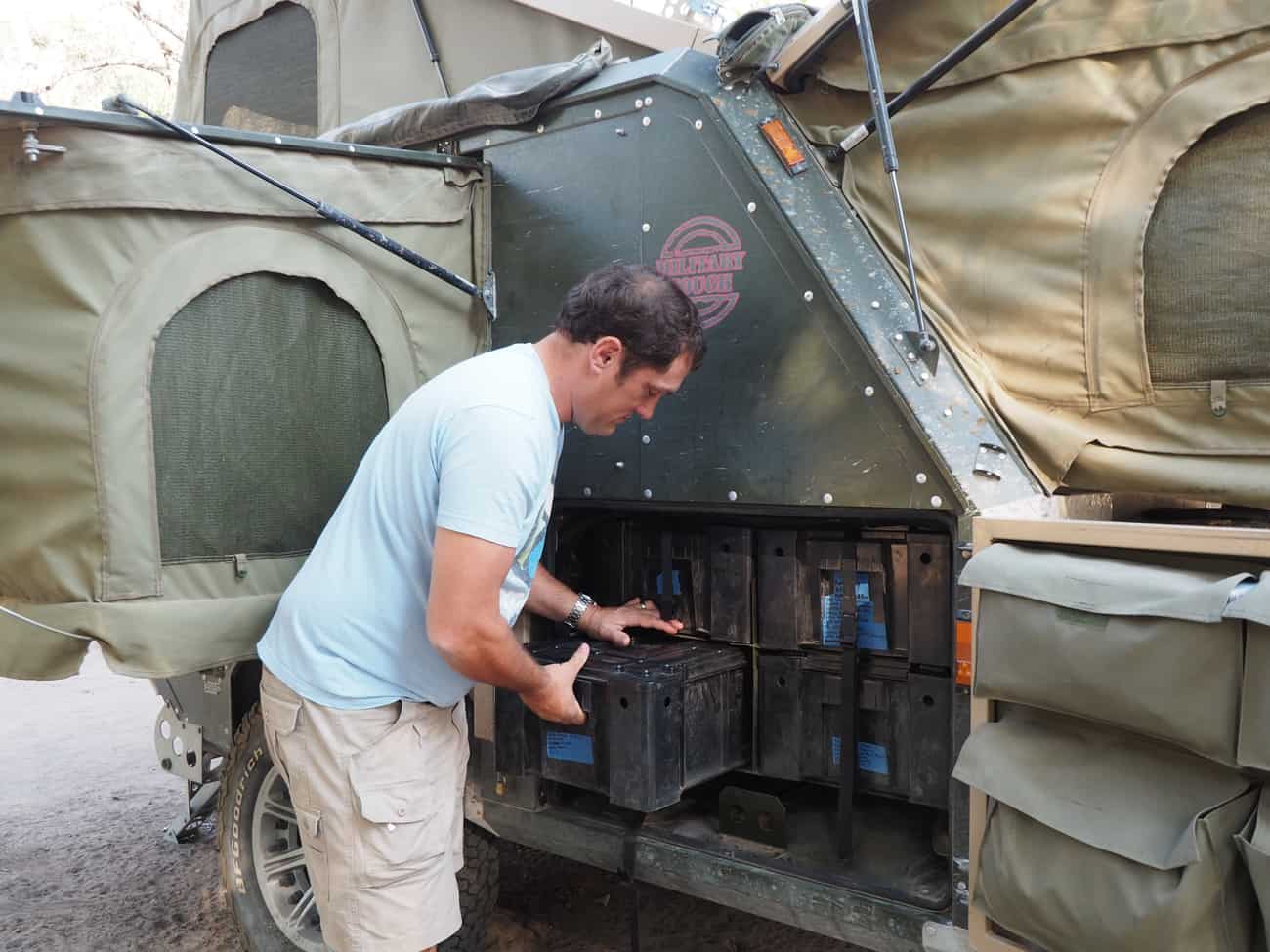
The UEV 440 comes with a bunch of storage space, a box on the tongue and four Wolf boxes opposite the kitchen. The full North American version comes with a second box on the tongue, adding even more space than we have. Our nose box is dedicated to two 4.5-kilogram (10-pound) propane bottles. These are enough for months of cooking at the rate we use them. It took us 3 months to empty one bottle, boiling water for coffee every morning and cooking about half our dinners on the stove. This nose cone box also holds the water heating system, which also supplies heat for the cabin heater, should we ever need it. It also supplies hot water to the shower mounted to the spare tire carrier. We haven’t used this yet, opting to keep all our water for drinking and cooking. The glycol-based system seemed complicated until we used it once. After that, we realized it is a simple process of turning on two switches. It turns itself off after a preset time period, and we have ours set for 30 minutes. The Webasto system is incredibly efficient, and we still have not used more than a liter of diesel in over 3 months. On our unit, the fitting on the outlet of the diesel tank leaked. I am sure that not all of them leak, but is a point to be monitored. The basement, as we call the cabinet containing the four Wolf boxes, is the space opposite the stove/dish storage. When the kitchen drawer is closed, the fridge is centered in the trailer, leaving this space. These 4 boxes are enough space for us to store spare parts, extra first aid supplies, our Dutch oven, and a few other “essential” items. We have consciously monitored what we keep here to prevent carrying unnecessary weight. Either way, it is a pretty handy space for those things you use every so often but not frequently enough to take up space inside.
One of the reasons we were excited to get a Conqueror is that everything available in North America of a similar size is far too delicate for where we normally travel and camp in America, let alone a trip through Africa. American camper trailers with similar space to the UEV 440 are either pop-up tent trailers or small travel trailers, none of which are built to withstand the off-road type environments where we prefer to go. Even this trailer has shown the stress of continued use on rough African roads. We have had the latches holding the front bed closed fail not once, but twice. The first time all five of the rivets holding one of the latches on to the lid broke off. The second time, on the heavily corrugated roads of Etosha National Park, both of the eye bolts that capture the lid broke, allowing the bed lid to open as we drove down the road. This latch has no way to flex with the body on rough roads, and something had to give. We have also found that hinge bolts work the nuts free, sometimes over the road, sometimes through use. This is surprising as all the nuts are Nylock. The back door weather seals are worn out already from body flex on the trailer. Conqueror did include a fan that pulls air in through a filter while driving over dusty roads. This creates positive pressure inside the trailer, keeping dust out. It has worked flawlessly, even with the seals worn out. This is yet another example of the thoroughness of Conqueror’s design engineers.
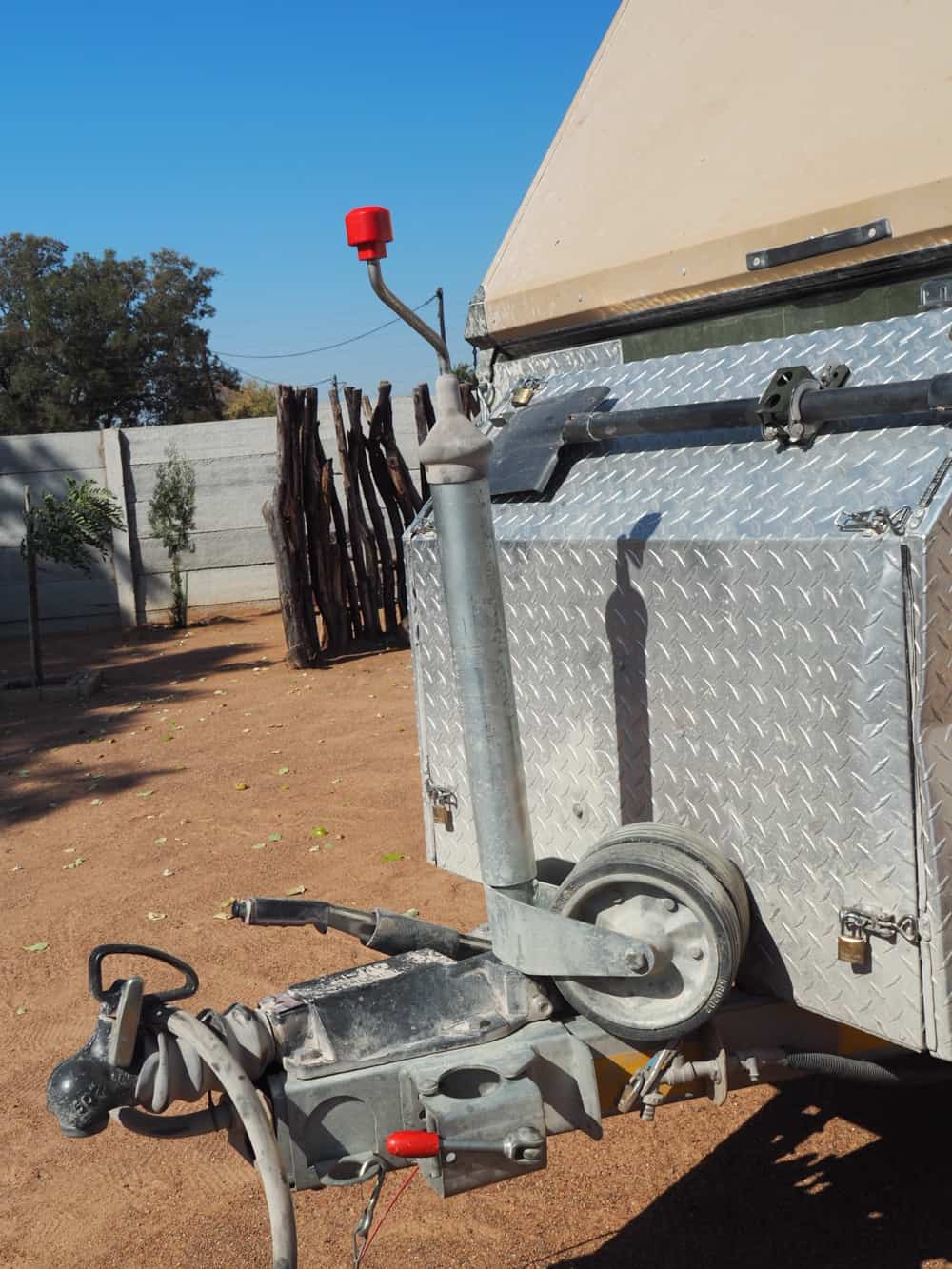
We have had one other problem, though somewhat self-imposed. Our shock absorber bushings failed, and one shock shroud broke off after only 6,000 miles. That mileage is over rough Namibian roads, and we do have 2-inch spacer adapters on the brake drums. The adapters are to allow us to run eight lug wheels matching those on the Jeep for extra spares. We changed brake drums getting rid of the spacer/adapters. This should make suspension problems a thing of the past. Even with spacers, I was surprised that the shock bushings failed so soon. The folks at the Conqueror factory confirmed that Tough Dog, the shock supplier, specified the wrong bushings and have since corrected this problem at no cost to us.
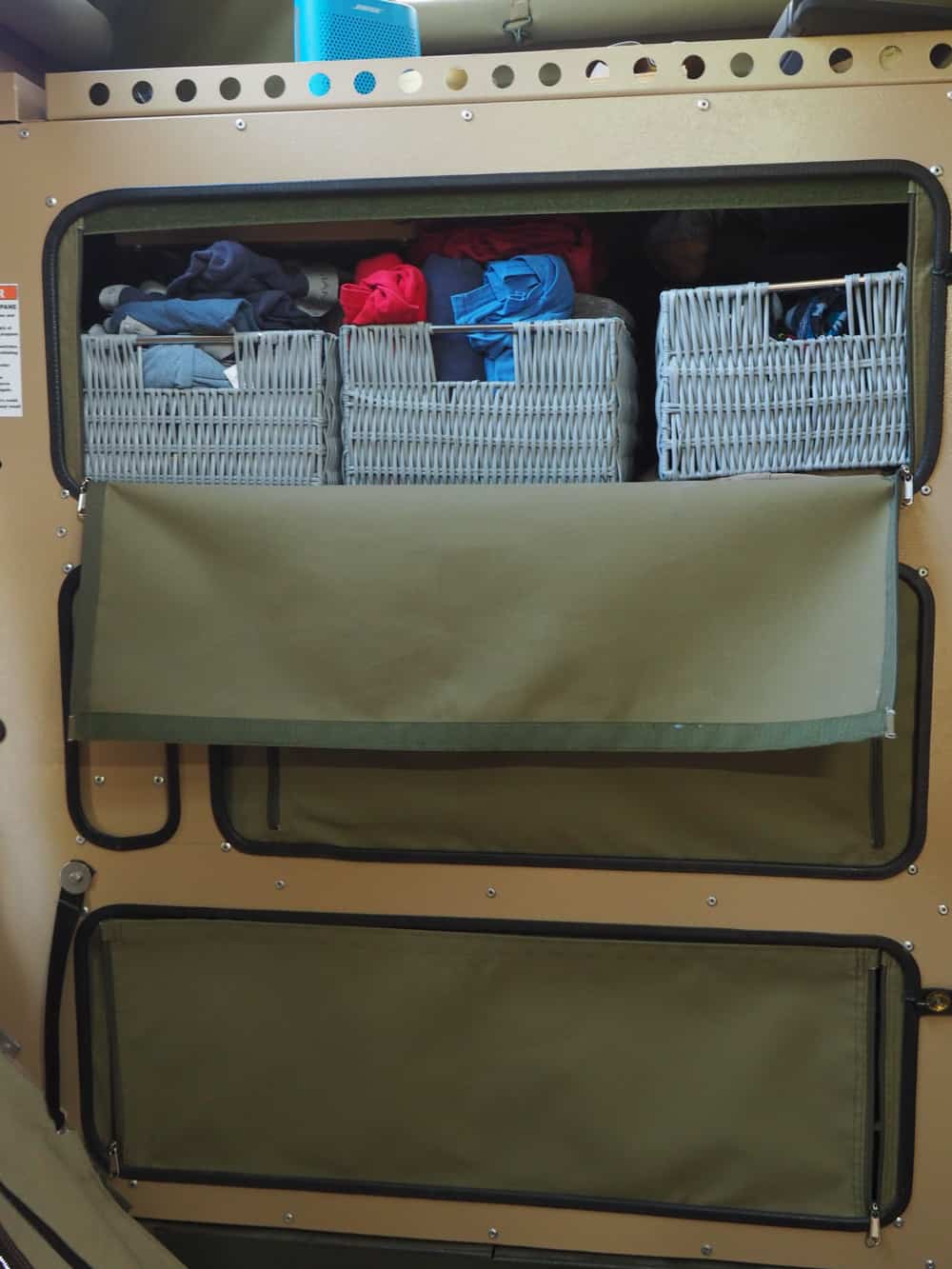
Conqueror’s design ingenuity has made living in the trailer really pleasant. From the lightweight yet secure zipped canvas cabinet doors in the closet, to the folding rear stabilizers, they made sure the UEV 440 is easy to use and durable. The control panel for the electrical system exemplifies this. Simple back-lit buttons control each circuit. You can tell at a glance if the fridge is getting power or if you turned off the exterior LED lights. The control screen shows the voltage and percent charged of the batteries, as well as the status of the DC-DC charger and water tank level. This screen is used to set the size and type of battery. We opted for 100 Ah Lithium-ion, and to reset the water level when you refill the 42-gallon water tank. Also on this panel are the breakers used when plugged into AC power. The trailer is set up for American 110V, 50A power, so we don’t use it here in Africa. We knew this ahead of time of course, and prepared by getting two 100 watt solar panels, which are enough to keep the batteries topped off for continuous fridge/freezer operation. Another ingenious option Conqueror designed in is the AlKo removable tongue jack, with a stowage spot on top of the tongue. When not in use, the jack just sits over a tube on top of the tongue, completely out of the way and unable to hang up on rough trails. Conqueror even included a BBQ grid that stores in the most out of the way place: over the spare tire.

We love our Conqueror and it has become an essential part of our touring setup. The bed is as comfortable as any mattress we have used. The interior space gives us a cozy, homey place to get out of the weather, and the kitchen carries enough food to feed an army while making cooking easy and fun. We even have a couple of bottles in the bar and sometimes carry wine. The storage is well thought out, well organized, and easy to use. Ingenious design elements make using all the features of the trailer simple, and it pulls behind the Jeep through even the toughest trails. If we had to define it in one word, it would be stout. We have put this trailer through some tough roads, and day in and out it continues to function. I don’t think the design engineers at Conqueror intended for it to be someone’s home for 365 days in a row, let alone for 2 to 3 years as we intend to use it. With all the problems noted previously, the folks at Conqueror in North America and at the South African headquarters have been helpful in getting us parts and fixing problems. They have even given me technical support so I could troubleshoot and fix issues on my own. While every camp trailer is a compromise, the UEV 440 Extreme is the option that meets most of our needs, and it does so with style and durability that is unmatched in the North American market.
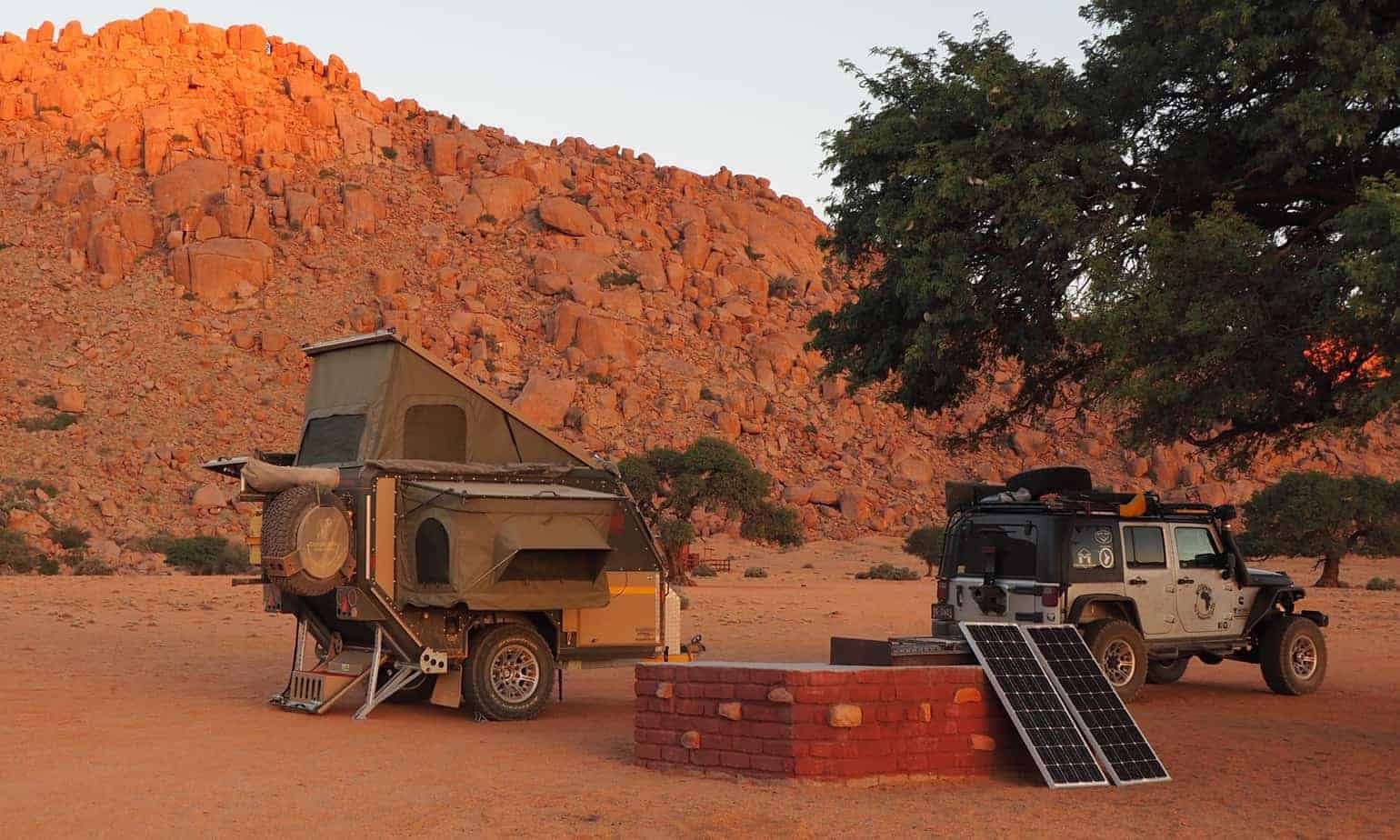
A final word on trailers. Towing a trailer is not for everyone, however, if someone is comfortable towing, and wishes to leave their vehicle fairly unmodified for daily driver duties, a trailer can be an optimal solution. By putting all of our “house” items on a trailer, we keep weight off the vehicle. Our Jeep does not carry any clothes, food, cooking tools, or beds and bedding. We can disconnect the trailer and have a fairly lightweight vehicle for day trips and excursions, and we don’t need to break camp just to go to the grocery store. We are conscious of extra weight and pack accordingly. Having a trailer allows us to keep car stuff in the car and house stuff in the trailer. That said, I am confident when towing, backing up, and parking a trailer. I understand that I must come to speed, accelerate, brake, and drive accordingly, and at the end of the day I am comfortable with the fact that a trailer will prevent us from going to a small number of places, because it allows us to go to a lot more places than we could without it.
To follow more of this family’s epic adventures, check them out on thepioneeringspirit.com

